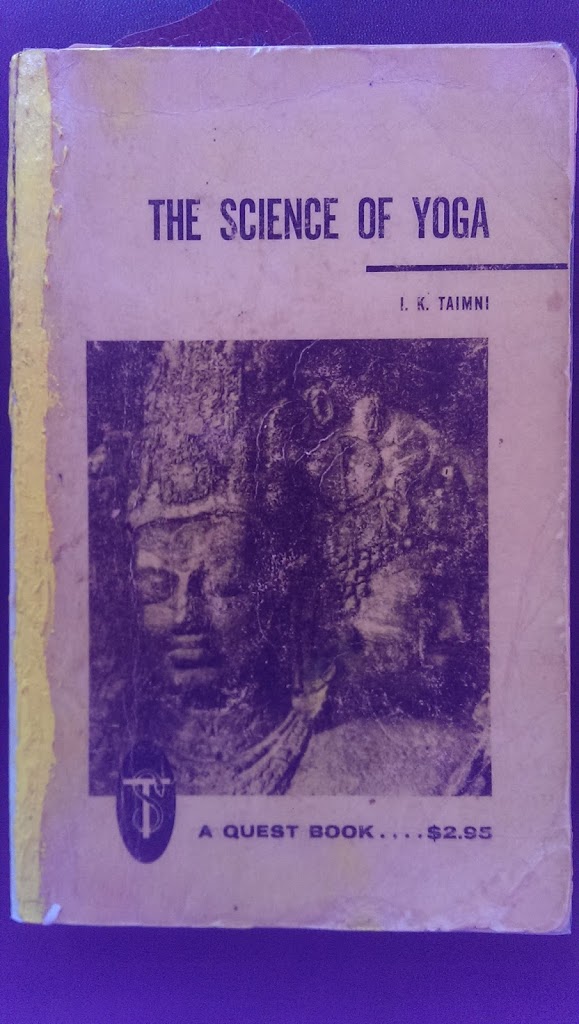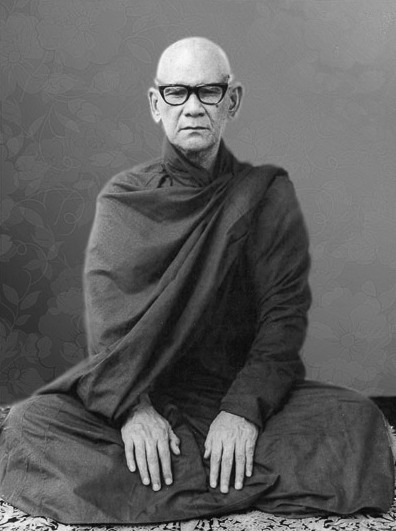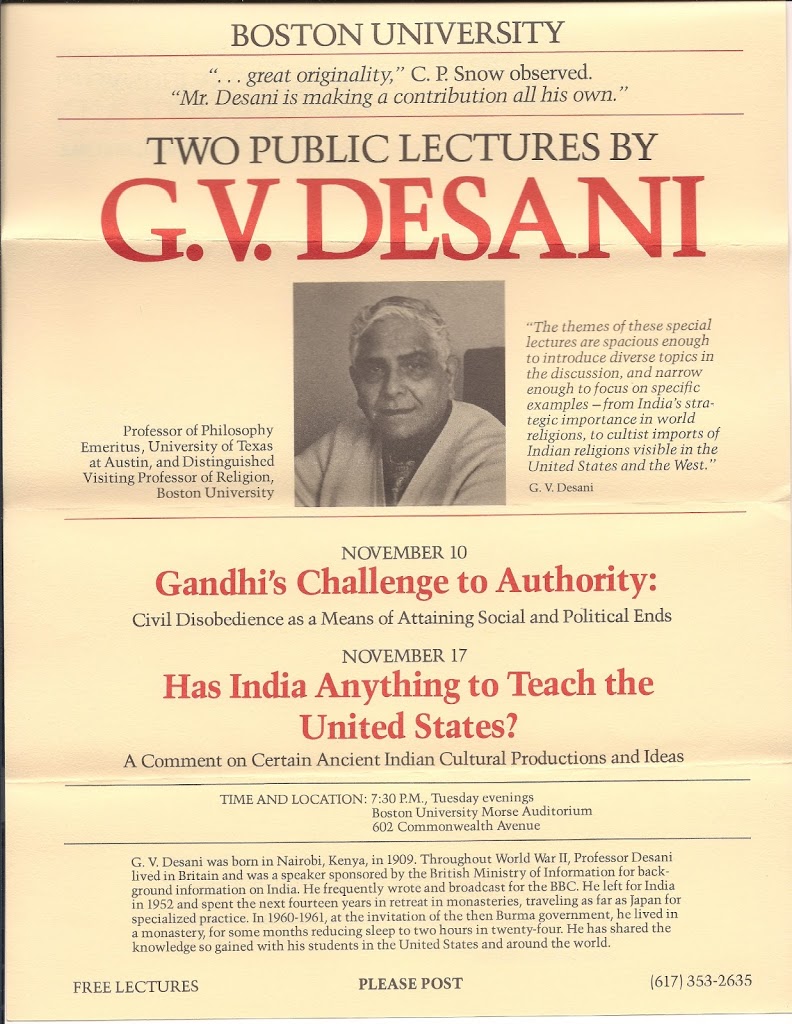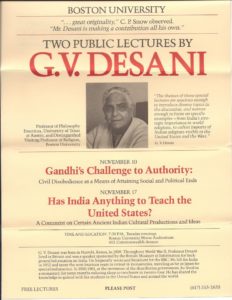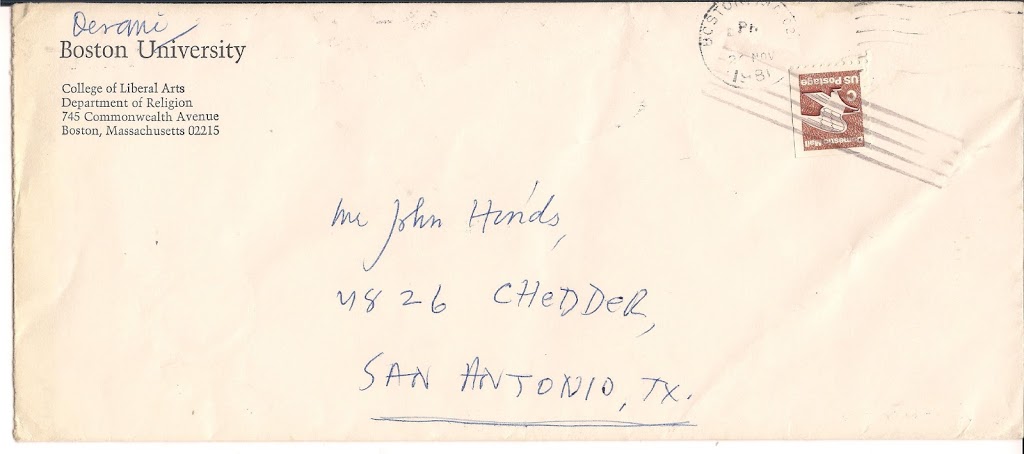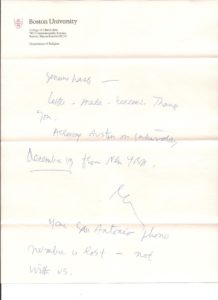Heavy Karma is in the mind. Unseen karma consists of innumerable past lives, deeds, words.
The desiring of an object is animalistic. Clinging to an object is equivalent to fear of loosing same. If one tends to animalism one eventually falls into violent experiences, employment, etc. He associates the proliferation of armaments.
A sanskara is an unaccountable karmasaya.
To have a spiritual mentor is a fixed destiny.
Attachment is associated with revulsion.
A selfless action is a virtuous action, duty, without intention, with love, with compassion.
Desani recounts spending a year learning to walk without intention – it is extremely difficult.
Restraints must be imposed on things that are easily overindulged in, e.g., sex.
When Satva rises to its highest level illumination is produced (in a situation).
The Science of Yoga
Sutra means aphorism. Yoga is to control the vriti of citta, consciouosness.
The Bhagavad Gita notes there are many yogas. The sage Patanjali’s yoga is a precursor of these.
Raja yoga
Dhyana/Zen yoga
Karma yoga – – yoga of action without desire
Bhakti yoga – – of devotion, like a practicing Christian’s love for his god
Hatha yoga – – physical yoga
Kundaline yoga
Samkhya is the theoretical basis of yoga.
With reservations there are three elements in Prakriti, the Gunas. They are sattva, rajas, tamas.
The first product of the union of the Purusha and Prakriti is Mahat. It is from Mahat that Patanjali intellectualized his compilation. It is also the Mahat that westerners allude to when they speak of Universal Mind., etc.
Consciousness is made of, consists of, the three Gunas. A rose is made of the Gunas. The image of a rose in one’s mind is made of the Gunas. The difference is, with reservations, a matter of quantity.
a. Satva – The most subtle substance in nature – mental substance. On the moral level it is goodness and on the aesthetic level, the most beautiful.
b. Rajas – Animating element
c. Tamas – Passive element. The tendency to procrastinate is tied in with Tamas. It is the steadying element, pulls toward sleep.
Yoga has to do with the second Guna, Rajas, with stopping the animating element so that Satva can shine forth. This is the quieting of consciousness.
Samadhi grants Mokhti, freedom.
Patanjali’s first sutra is that Yoga is the inhibition of the citta vritis (modifications of the mind).
Five kinds of citta vritis
1. A person feels full of lethargy, sleepy. a. and b. are conquored by c. He notes that the gods never sleep and recounts that as a monk he went ten or so days without sleep stating that during this time Satva reigns.
2. A person is full of anger – c. dominates
3. A person is full of restlessness – b. dominates
4. A person is full of good works – a. dominates
5. The highest Samadhi is the one that grants knowledge though it is still a modification of the mind.
So, Purusha, spirit, and Prakriti, cosmic substance are foundational.
Yoga means union (yoke).
The first result of the union (yoking) of spirit and cosmic substance is cosmic intelligence.
He mentions the Nadi Shastras speaking of foreknowledge. Two centuries ago a palm leaf refers to Desani by name, gives date of birth, place, and so forth.
Qualities of Purusha – It is the lord, it is not material, it is conscious.
Qualities of Prakriti – Satva – mental substance, Raja – activating element, Tama – inertia.
He says that a 2500 year old commentary says that space and time are schemes for the understanding.
In Mahat Satva dominates. Mahat is the source of wisdom. Mahat is the first evolute.
Literally Mahat means the great.
When Purusha and Prakriti are joined and the first evolute arises it is Purusha who sees this. It is Purusha that sees all.
Ahamkara is the precondition for the mind’s ability to discriminate. At Mahat there is no discrimination but just one ocean of light. He gives thought that most people evolve to Ahamkara and stop, especially Westerners.
Yoga is the stilling of citta (consciousness) vritis (modifications of consciousness).
Consciousness is material so what we think effects others.
Thought impinges on its object. If I think of a person as dead that person will find his death. If I think good thoughts about a person that person will find good. Of course, this applies only if there are certain yogic attainments. (Desani has seen this in action.)
Thought is substance. Think Satva will increase and it will. Think Raja as increasing, it will. Think Tama as increasing, it will.
He gives example of a teacher at Cambridge (Desmond) hitting a student who questioned whether thought could be proved to be a substance, in the stomach with a visualized – by thought – heavy object. Desmond turned, whirled to face student. Student fell, was hospitalized, almost died. Desani says this is a “petty trick”.
Also relates that a man worked ten years to perfect a trick whereby he could not be moved by five men (from a train when he refused to pay for a ticket). He thought a heavy object into existence at the base of his spine – he cultivated Tama at the base of his spine.
Four states of consciousness – Awake, sleep, profound sleep, Samadhi.
One must practice and practice detachment.
The intellect is material. If it is mirror like, superior material, it is comprised mostly of Satva.
Purusha is masculine, the divine father. Prakriti is femine, the divine mother.
________________________________________
This is from my actual notes from the class of spring, 1973 at the University of Texas, Department of Philosophy, Austin, Texas. The department chairman was Irwin Lieb. The dean of Arts and Sciences was John Silber. Raja Rao also taught there at this time. I took his course on Mahayana Buddhism. Desani also taught a course on Theravada Buddhism.
Rao’s class was, as I recall 200 or more students. Desani’s class on Patanjali, about 20, maybe 30, no more.
My old textbook:
J.H.

